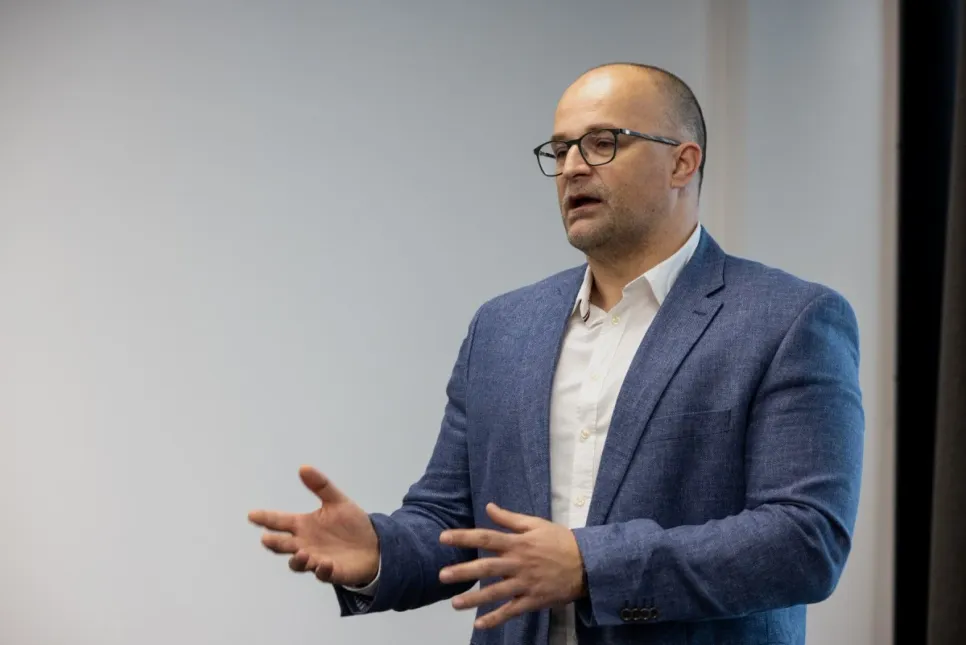Industry associations play a crucial role in shaping the digital future of national economies, especially in the fast-growing data center sector, which is becoming the backbone of artificial intelligence (AI), cloud computing, and digital transformation across Europe. According to Igor Grdić, Regional Director at Vertiv for Central and Eastern Europe and Vice President of the Croatian Data Center Association (HDDCA), such organizations are essential for establishing dialogue with government institutions, raising awareness about the importance of data centers, and defining measures that can accelerate the development of the entire ecosystem.
“The data center industry is rapidly expanding across Europe, driven primarily by the explosive growth of AI,” says Grdić. “This is why it’s vital for Croatia’s data center sector to professionalize quickly and strengthen international cooperation.”
Placing the discussion in a global context, Grdić notes that the data center market is undergoing an unprecedented phase of transformation and expansion. According to leading analyst firms, the market was valued between $237 billion and $347 billion in 2024 and is projected to grow to between $613 billion and $652 billion by 2030, representing a compound annual growth rate (CAGR) of 11.1–11.4 percent. This makes it one of the fastest-growing segments of the global digital infrastructure economy.
AI is the primary catalyst for this growth. Gartner reports that total IT spending in Europe reached $1.18 trillion in 2024 and is projected to rise to $1.28 trillion in 2025, an 8.7% increase. Global spending on data center systems alone hit $333.4 billion in 2024, up 40.3% year-over-year, and is expected to climb to $489.5 billion in 2025, a growth rate of 46.8%, before reaching $582.5 billion in 2026.
Speaking at Vertiv Week in Tognana, Italy, where Vertiv operates its production and R&D facilities, Grdić emphasized the growing role of HDDCA within the broader European data center community. “The Croatian Data Center Association was founded on September 17, 2024, and has just celebrated its first anniversary,” he said. “We were inspired by similar organizations, France’s association, now 14 years old; Poland’s, active for three years; and Germany’s, founded seven to eight years ago. We’re the youngest, but we’re following a proven path.”
He added that three new national associations are currently being established in Hungary, the Czech Republic, and Romania, further proof of the strong momentum in Central and Eastern Europe’s data center market. “Governments are increasingly focusing on this sector because it’s still relatively new and not yet fully addressed by regulation. Associations like HDDCA are therefore vital; they help define the sector, communicate its economic and technological importance, and advocate for national strategies that support its growth,” Grdić explained.
Data centers, he stressed, are not just about storage and compute; they create a ripple effect across the economy. “They generate jobs, stimulate innovation, and form the core of digital sovereignty,” he said. “The Croatian Data Center Association can play a key role in developing the country’s digital infrastructure. Our goal is to position Zagreb and Croatia firmly on Europe’s data center map.”
Grdić pointed out that Europe’s data center market is stratified into distinct tiers. “Everyone knows the Tier 1 cities Frankfurt, London, Amsterdam, Paris, and Dublin, known collectively as the FLAP-D markets. Then come the Tier 2 cities, such as Milan, Berlin, Munich, and Warsaw. Zagreb isn’t yet close to Tier 2 status, but that’s exactly what we’re aiming to change,” he said.
To that end, HDDCA plans to publish a comprehensive study on the state of Croatia’s data center market in the first half of 2026. “There are varying figures circulating; some claim the country has between 2 and 20 megawatts of installed IT capacity, but the truth lies somewhere in between. Our goal is to present a transparent overview of the market: how much capacity is operational, how much is under construction, and what’s planned for the near future,” Grdić explained.
The association currently has 21 members, including leading Croatian and international companies from the infrastructure, energy, and IT sectors, as well as several foreign members from Hungary and Italy.
“In 2026, we plan to organize our first public event for the media and the broader market, an annual conference similar to those held by our European counterparts,” Grdić announced. “We’ll also publish the national data center market report to provide a clear, accurate picture of Croatia’s capacity, ongoing projects, and investment potential. The goal is to make Croatia a more attractive destination for data center investment and a stronger participant in Europe’s digital future.”



















